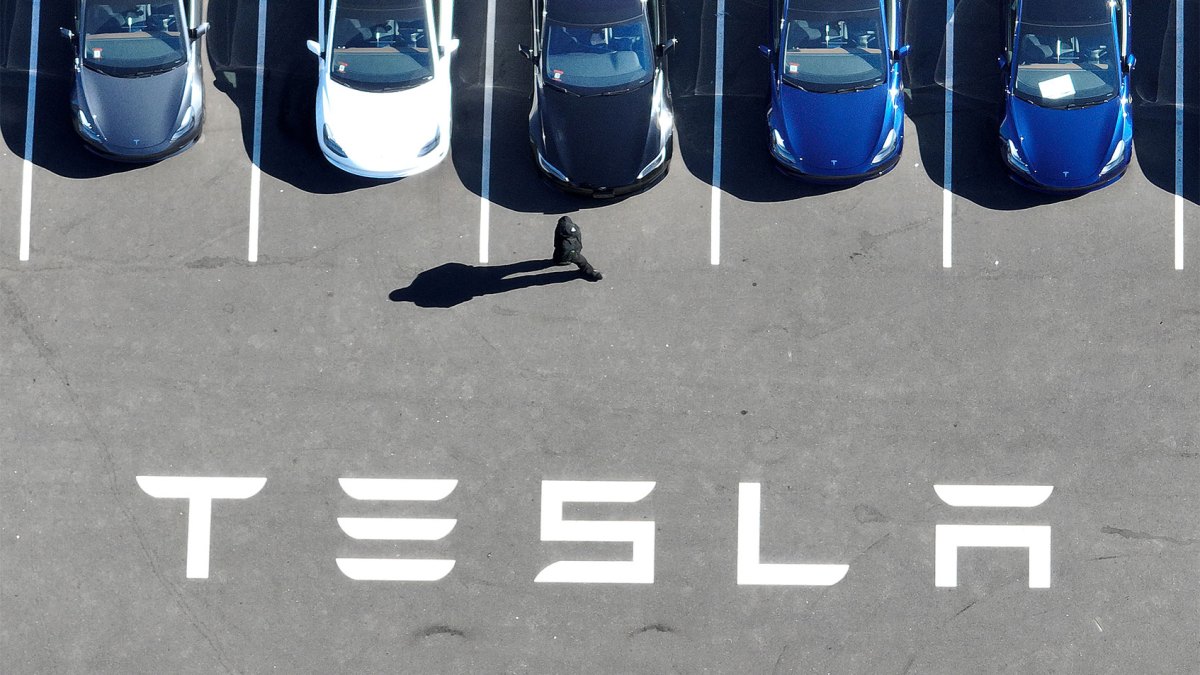Tesla profits fell 55% to $1.13 billion in the first quarter from the same year-ago period as a protracted EV price-cutting strategy and “several unforeseen challenges” cut into the automaker’s bottom line. Tesla reported revenue of $21.3 billion in the first quarter, a 9% drop from the first quarter of 2023. Analysts polled by Yahoo Finance […]
© 2024 TechCrunch. All rights reserved. For personal use only.
Tesla profits fell 55% to $1.13 billion in the first quarter from the same year-ago period as a protracted EV price-cutting strategy and “numerous challenges” cut into the automaker’s bottom line.
Tesla reported revenue of $21.3 billion in the first quarter, a 9% drop from the first quarter of 2023. Analysts polled by Yahoo Finance expected earnings of $0.51 per share on $22.15 billion in revenue. Tesla reported operating income of $1.2 billion in the first quarter, a 54% decrease from the same year-ago period.
The company said in its Q1 earnings report that it experienced “numerous challenges” in the first quarter, including the Red Sea conflict and the arson attack at Gigafactory Berlin and the gradual ramp of the updated Model 3 at its factory in Fremont, California. Tesla also noted that global EV sales continue to be under pressure as many carmakers prioritize hybrids over EVs. On the upside, that hybrid approach has meant automakers continue to buy regulatory credits; Tesla earned $442 million in the first quarter.
The results, posted after markets closed Tuesday, sent shares up 7% immediately following the release as investors appeared to be more focused on Tesla’s forward-looking remarks about future products. Despite the downward trend in profits, Tesla used the first-quarter report to focus on the future, namely about making advances in autonomy and the introduction of new products, including those built on its next-generation vehicle platform.
Tesla has seen EV sales grow over the past several years, topping out to a new record of 1.8 million vehicles in 2023. But the company’s profits have suffered thanks to repeated price cuts that started in late 2022.
While those price cuts did provide a temporary bump in sales, it hasn’t had a lasting effect. Tesla delivered 386,810 vehicles in the first quarter of 2024, down 20% from the 484,507 it delivered in the final quarter of 2023. This wasn’t just a quarter-over-quarter blip either; Tesla delivered 8.5% fewer cars than the first quarter of 2023.
Tesla warned in January that growth of its vehicle sales “may be notably lower” in 2024, noting at that time it was between “two major growth waves” and prepping for the launch of a new vehicle platform to build a smaller EV that costs around $25,000. The company has also been prepping a “robotaxi” built on the same platform. In the meantime, Tesla’s only new model is the expensive (and fussy) Cybertruck.
Tesla CEO Elon Musk said during the company’s earnings call in January the smaller and cheaper EV would go into production in late 2025 at the company’s factory in Texas and eventually expand to a yet-to-be-built factory in Mexico.
Three months later, Musk appears to have scrapped the company’s low-cost EV playbook. Musk paused those low-cost EV plans, opting instead to plow headlong into launching the robotaxi, which will be revealed in some capacity in August. Less than two weeks after announcing the robotaxi launch date, Musk oversaw a 10% reduction in headcount and a restructuring that puts autonomy in sharp focus.
Two high-profile executives — Drew Baglino, Tesla’s SVP of Powertrain and Energy, and Rohan Patel, VP of Public Policy and Business Development — also left the company.

Leave a Reply